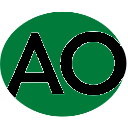Overall, A.O. Smith demonstrates strong business quality through its market position and commitment to shareholder returns, despite facing challenges from declining sales in key markets and margin pressures. Future prospects are cautiously optimistic, with growth potential in India and strategic restructuring efforts in China, although significant uncertainty remains.
Analysis Date: January 30, 2025
Last Updated: March 11, 2025
Trailing Twelve Months (TTM) values provide a view of the company's performance over the last year.
Graham Value Metrics
Benjamin Graham's value investing approach focuses on finding stocks with a significant margin of safety between their intrinsic value and market price.
Intrinsic Value
Estimated fair value based on Graham's formula
$140.94
Current Market Price: $61.04
IV/P Ratio: 2.31x (>1.0 indicates undervalued)
Margin of Safety
Gap between intrinsic value and market price
56.99999999999999%
Graham recommended a minimum of 20-30% margin of safety
Higher values indicate a greater potential discount to fair value
ROE: 27.202977237388797
ROA: 3.3858024691358026
Gross Profit Margin: 38.100102145045966
Net Profit Margin: 13.975537571043189
Trailing Twelve Months (TTM) values provide a view of the company's performance over the last year.
Strong Return on Equity
A return on equity of 27.20% reflects very strong profitability and efficient use of equity capital, indicating that the company generates high returns for its shareholders.
Healthy Profit Margins
Gross profit margin of 38.10% and net profit margin of 13.98% indicate robust profitability and effective cost management.
Moderate Operating Profit Margin
18.74
Operating Profit Margin
An operating profit margin of 18.74% is decent but could be improved, suggesting there may be room for operational efficiency enhancements.
About Profitability Metrics
Profitability metrics measure a company's ability to generate earnings relative to its revenue, operating costs, and other relevant metrics. Higher values generally indicate better performance.
Return on Equity (ROE)
Measures how efficiently a company uses its equity to generate profits
27.20%
10%
15%
Higher values indicate better returns for shareholders
TTM (as of 2025-04-16)
Return on Assets (ROA)
Measures how efficiently a company uses its assets to generate profits
3.39%
3%
7%
Higher values indicate better asset utilization
TTM (as of 2025-04-16)
Gross Profit Margin
Percentage of revenue retained after accounting for cost of goods sold
38.10%
20%
40%
Higher values indicate better efficiency in production
TTM (as of 2025-04-16)
Net Profit Margin
Percentage of revenue retained after accounting for all expenses
13.98%
8%
15%
Higher values indicate better overall profitability
TTM (as of 2025-04-16)
Low Debt Levels
0.07
Debt-to-Assets Ratio
The debt-to-equity ratio of 0.10 and debt-to-assets ratio of 0.07 indicate a very strong balance sheet with minimal reliance on debt financing.
Strong Interest Coverage
106.78
Interest Coverage Ratio
An interest coverage ratio of 106.78 shows that the company can comfortably meet its interest obligations, reflecting strong financial stability.
Low Cash Ratio
A cash ratio of 0.27 indicates that the company may not have sufficient cash reserves to cover its short-term liabilities in an emergency.
Quick Ratio Below 1
With a quick ratio of 0.96, the company is slightly below the ideal level, indicating potential liquidity concerns if short-term obligations become due.
About Financial Health Metrics
Financial health metrics assess a company's ability to meet its financial obligations and its overall financial stability.
Debt to Equity Ratio
Total debt divided by total equity
0.10x
1.0x
2.0x
Lower values indicate less financial leverage and risk
Less than 1.0 is conservative, 1.0-2.0 is moderate, >2.0 indicates high risk
Q4 2024
Current Ratio
Current assets divided by current liabilities
1.55x
1.0x
2.0x
Higher values indicate better short-term liquidity
Less than 1.0 is concerning, 1.0-2.0 is adequate, greater than 2.0 is good
Q4 2024


